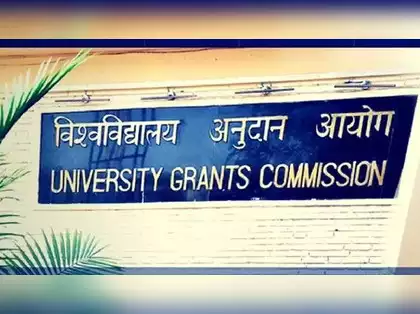The University Grants Commission (UGC) has introduced major reforms for undergraduate (UG) and postgraduate (PG) programs, set to take effect from the 2025 academic session.
Aligned with the National Education Policy (NEP) 2020, these reforms aim to make higher education in India more flexible, accessible, and globally competitive. Students will now be able to personalize their academic paths through features such as multiple entry and exit options, interdisciplinary studies, and the opportunity to pursue two degrees simultaneously.
One of the most notable reforms is the introduction of the Multiple Entry and Exit System, which allows students to earn a certificate, diploma, or degree based on the credits they complete and to resume their studies later without losing prior progress.
The Academic Bank of Credits (ABC) will digitally store students’ credits, enabling seamless transfers between universities.
Furthermore, the implementation of biannual admissions and the integration of skill-based learning aim to modernize the higher education system, making it more flexible and aligned with student needs and industry requirements.
Major Highlights of UGC’s 2025 Reforms
Multiple Entry and Exit: Students can exit after 1, 2, 3, or 4 years with a certificate, diploma, general degree, or honours degree, respectively.
Academic Bank of Credits: All credits earned are stored digitally, allowing students to transfer, accumulate, or use them across Indian universities.
Dual Degrees: Students can pursue two UG or PG programs simultaneously, even from different universities or in different formats (offline, online, distance).
Biannual Admissions: Universities can admit students twice a year-July/August and January/February-reducing waiting periods and increasing flexibility.
Skill-Based and Multidisciplinary Learning: At least 50% of credits must be in the main subject, with the remainder from skill, vocational, or multidisciplinary courses, including internships.
Discipline-Agnostic Admissions: Students can choose any program, regardless of their previous field, provided they clear the relevant entrance exam.
Flexible Attendance: Higher education institutions can set their own attendance requirements, adapting to hybrid and evolving academic models.
Table: UGC’s Multiple Entry and Exit Framework
| Years Completed | Credits Required | Certification Awarded |
| 1 Year | 40 | Certificate |
| 2 Years | 80 | Diploma |
| 3 Years | 120 | General Degree |
| 4 Years | 160 | Honours/Honours with Research |
How to Check UGC Regulations and Updates
Visit the Official UGC Website: Go to ugc.gov.in.
Navigate to ‘Regulations’ or ‘Guidelines’: Find the latest rules for UG and PG courses under the 2025 regulations.
Review Drafts and Notices: Check for public notices, draft regulations, and final guidelines.
Download and Access the full text for details on credit systems, degree durations, and eligibility.
Stay Updated: Follow updates for any changes, feedback deadlines, or clarifications.
What These Reforms Mean for Students
Greater Flexibility: Students can pause and resume studies, switch disciplines, or pursue multiple interests without starting over.
Global Competitiveness: Aligns Indian degrees with international standards, boosting global mobility and recognition.
Skill-Readiness: Emphasizes practical skills, internships, and vocational training alongside academic learning.
Increased Access: Biannual admissions and discipline-agnostic entry remove traditional barriers, making higher education more inclusive.
Official Website
For the full regulations, guidelines, and official updates, visit:
ugc.gov.in
The UGC’s 2025 reforms promise a transformative, student-centric higher education system, empowering Indian youth with choice, flexibility, and future-ready skills.



